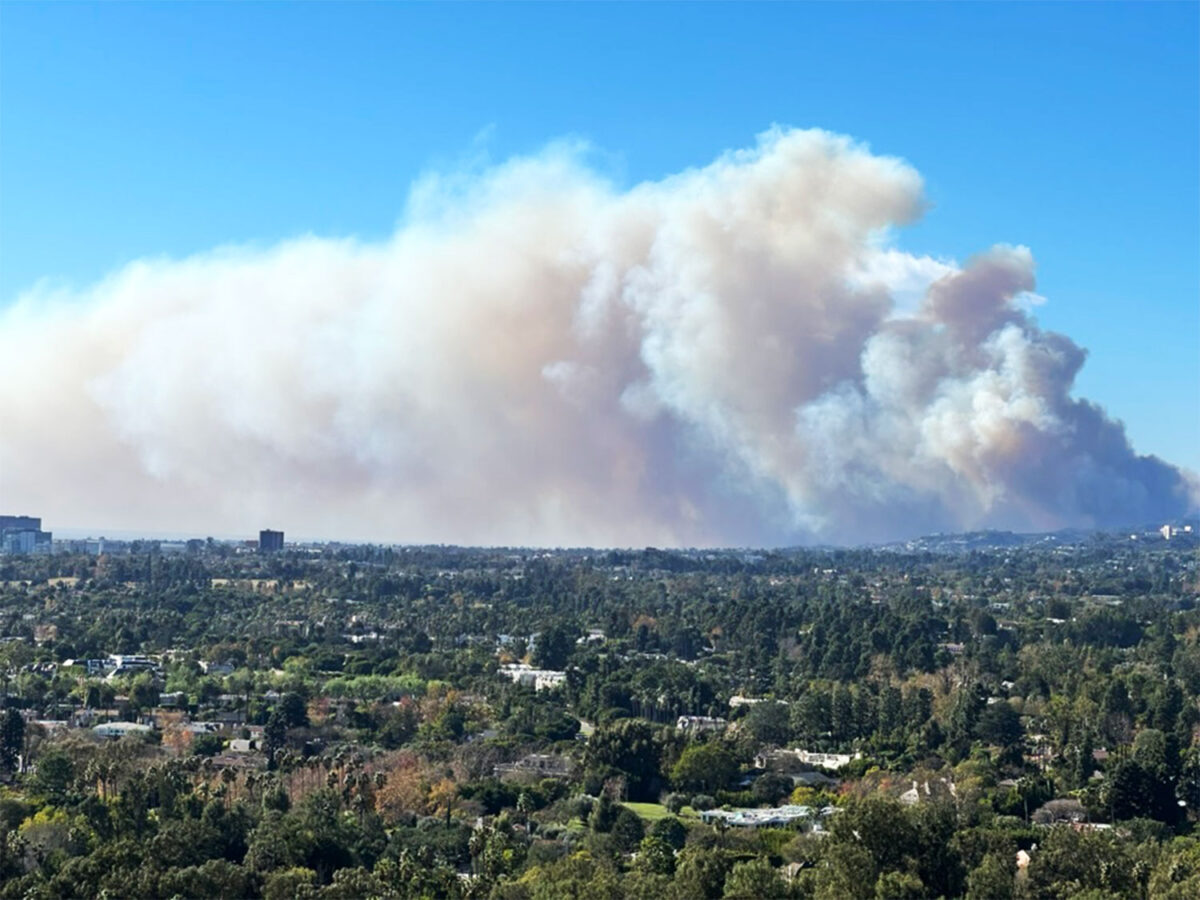In the coming decade the City of Beverly Hills will be required to build hundreds of new housing units as mandated by State Housing Law.
While the Southern California Association of Governments (SCAG) has yet to determine just how many new units Beverly Hills must build by October 2029, let alone the allocations for the 190 other cities the planning organization represents, the City Council is actively moving forward on a path to augment its stock of affordable housing in tandem with creating new units.
“We’ve been a very stable community and that’s actually a good thing. Growth is not always a good thing,” said Mayor John Mirisch, who has made affordable housing a priority since taking the reigns as mayor. “When there is development in our city, we can and we should look to mitigate the impacts. I think that it makes sense that if someone builds luxury condos, we should be able to look to that development and say to the developer that they need to fulfill these other needs.”
One such action a luxury property developer might take in the future, if adding an affordable unit or two to a project isn’t feasible, would be to pay an in-lieu fee which would go into a fund that could be used to build affordable housing or maintain existing units.
In anticipation of adopting an Inclusionary Housing Ordinance and an Affordable Housing Development fee, Beverly Hills is undertaking a multiplicity of studies to help ensure that the process is done thoughtfully. Last month the City Council unanimously approved a consulting agreement with Keyser Marston Associates, Inc., in addition to unanimously voting in favor of an ordinance to amend the occupancy priority rankings for affordable housing units built in the city.
Keyser Marston Associates’ contract includes a residential inclusionary housing study, which would evaluate potential requirements that developers include affordable units or pay a fee in-lieu of providing units, in addition to a residential and commercial nexus study, which is intended to help understand the potential for adopting an affordable housing linkage fee to generate funding for affordable housing.
“It’s time we had an inclusionary housing policy in the city, so I’m glad we’re moving forward with this,” said City Councilman Bob Wunderlich.
Keyser Marston Assoc. Managing Principal Kathe Head is expected to return to City Council on Oct. 29 to continue the conversation with the council in tandem with moving forward on the study.
Senior Planner Timothea Tway said she anticipated that the City Council would review the results of the consultant’s finding early next year in anticipation of city staff preparing a draft ordinance that would be sent to the Planning Commission, before ultimately returning to City Council for a vote.
Mirisch, aware that it is unlikely that he would still be mayor when the council votes on the actual ordinance, told the Courier he was gratified that he would still be on the council when it comes before them in its final form.
In August, after the California Department of Housing and Community Development (HCD) sent a letter to SCAG informing the organization that its member municipalities would be required to build a total of 1,344,740 new units, as per the state-mandated Regional Housing Needs Assessment (RHNA), Mirisch sent a letter to SCAG’s RHNA subcommittee finding fault with the allocation methodology. Whatever number SCAG ultimately lands on, which will be decided by October 2020, Beverly Hills will be told precisely how many new units to build of a variety of housing types, including moderate, low-income and very low-income.
“The City (of Beverly Hills) is entirely built out, with almost no vacant land upon which to construct new housing and has experienced very little population and employment growth over the last few decades. Due to these factors, almost any new multi- family units that are constructed would be displacing existing residents, most of whom are in rent controlled units,” Mirisch wrote in his letter dated Aug. 23, precisely one day after HCD informed SCAG of the total number of units the agency would be required to produce collectively. “The City of Beverly Hills believes RHNA allocation numbers should link new housing production with job production in order to ensure that existing jobs/housing imbalances are not further exacerbated.”
Almost a month after Mirisch’s letter to SCAG, the organization sent its own letter to HCD formally objecting to the state’s housing determination. Tway told the Courier that HCD’s number was hundreds of thousands above what SCAG was expecting, perhaps by as much as double. The 10-page letter from SCAG cited multiple “technical shortcomings in HCD’s analysis of regional housing needs,” in addition to characterizing the replacement need as “arbitrary.”
“From our review, HCD’s data and use of data is not current,” writes SCAG Executive Director Some Ajise to HCD Acting Director Doug McCauley. “Some of the social conditions upon which the determination is based will be eight years old” when the next cycle of RHNA is slated to begin, in October 2021.
The RHNA, which quantifies the need for housing within each jurisdiction during specified planning periods, is slated to begin its sixth cycle in October 2021, which will go through October 2029. While not designed to specifically encourage or promote growth, the assessment is intended to help communities anticipate growth.
Clearly the region is in the midst of housing crisis, as are a multitude of municipalities throughout the state.
“We’ve talked a lot about affordable housing in recent years because of the affordable housing crisis in the state,” Tway tells the Courier. “What we’re doing now is we’re studying the environment in Beverly Hills to see what our (inclusionary housing) program would look like.”
Approximately 63 percent of the housing units in Beverly Hills are located in multi-family buildings, with the majority now subject to rent stabilization, following passage of the Rent Stabilization Ordinance earlier this year. However, according to Tway, there are just over 100 affordable housing units in the city, with the majority situated in the Menorah Housing Facility, which offers low income senior housing.
The newly passed ordinance concerning priority rankings makes housing for seniors (62 years and older) a priority, with seniors displaced from a site at the top of the priority list.
While Beverly Hills’ inclusionary program is still in the initial stages of being formulated, Tway said that the city was looking to its neighbors with robust programs, like West Hollywood, to help serve as models. Some cities, by comparison, require developers to build 20 percent of new multifamily projects as affordable housing a challenging prospect in Beverly Hills, given the high price of land.
Keyser Marston Assoc. is slated to look at the economics of the area and development standards as part of its contract with the city.
“What you don’t want is to have regulations that are so stringent that you get no development and therefore no units. So it’s a balance,” Tway said, adding that the key to a successful program is figuring out how to leverage development and understanding what direct things the city can do now to provide affordable housing. “The consultant will do all the number crunching here’s what the market will bear; here’s what you can do as in-lieu.”
“It might be controversial,” she added upon projecting out to the creation of the ordinance. “We obviously understand this is a huge problem.”
Discussions leading up to this moment have been ongoing for years. In 2017, the Planning Commission recommended that the City Council amend portions of Title 10 (Planning and Zoning) of the Beverly Hills Municipal Code to refine the occupancy priority list for affordable housing units built in the city. And the city’s last Housing Element update six years ago, which is required by the state in tandem with the start of a new RHNA cycle, states that Beverly Hills will explore inclusionary housing. However, it wasn’t until Mirisch took over as mayor this past March that the city began taking steps to move forward on that pledge.
“I think it’s very smart of us to do this resolution because I think there are other instances where I wish we had been as proactive as we are today,” Councilwoman Lili Bosse said at the most recent City Council meeting.







